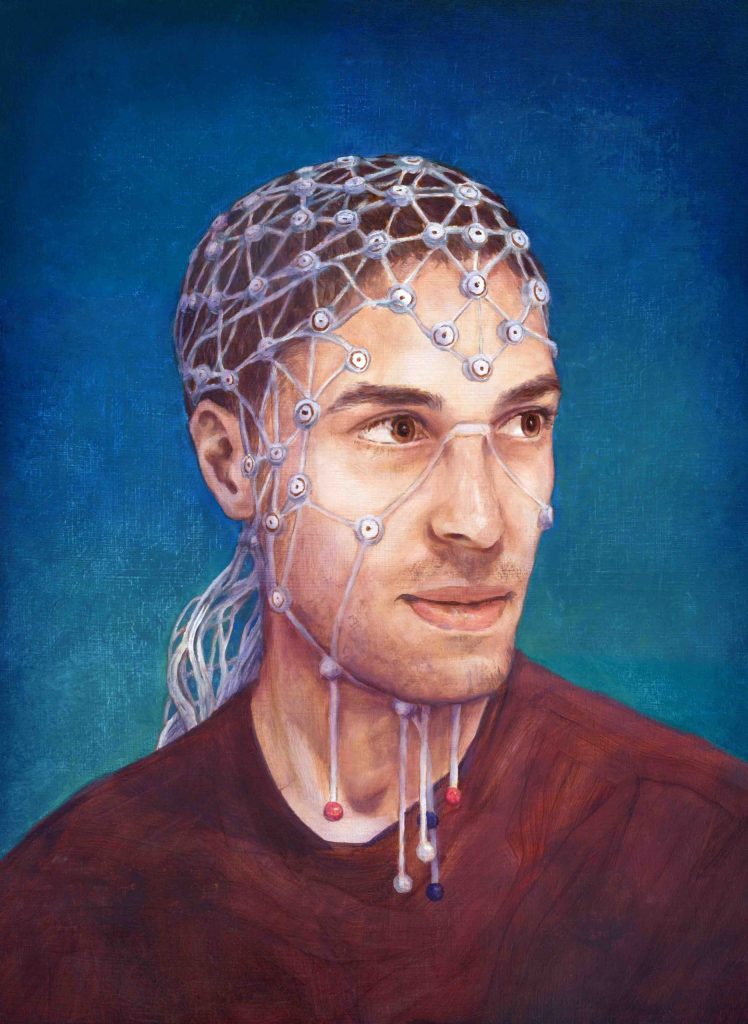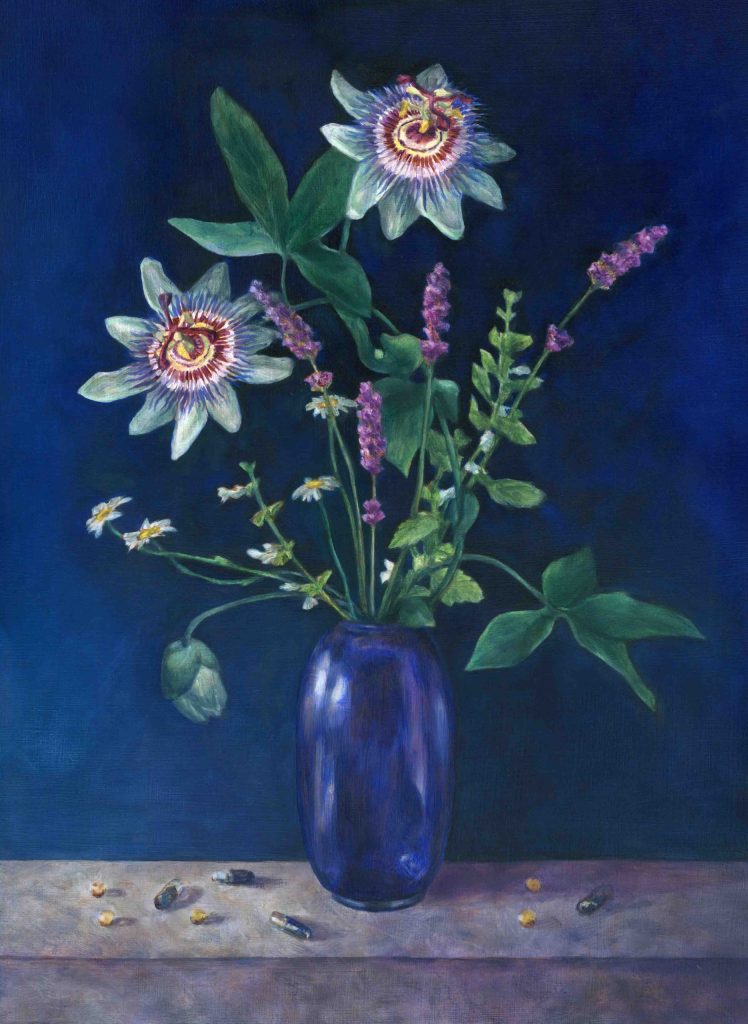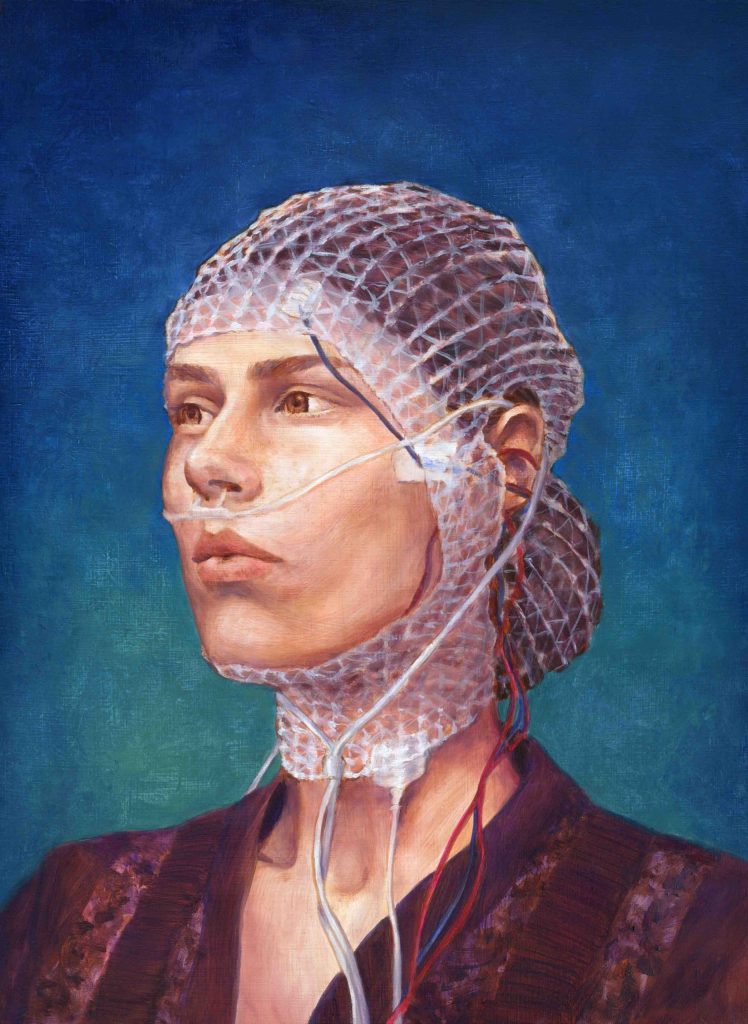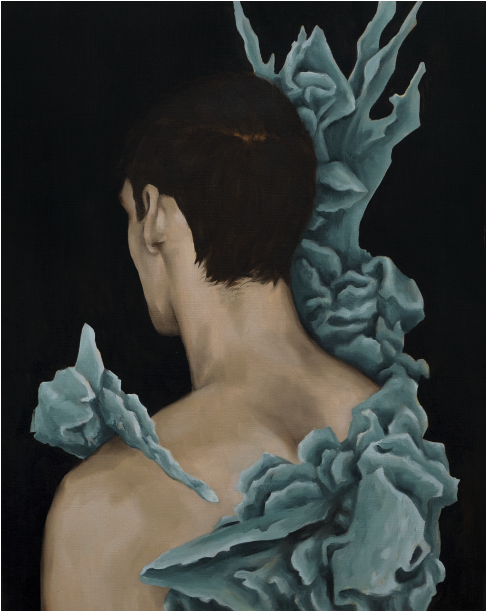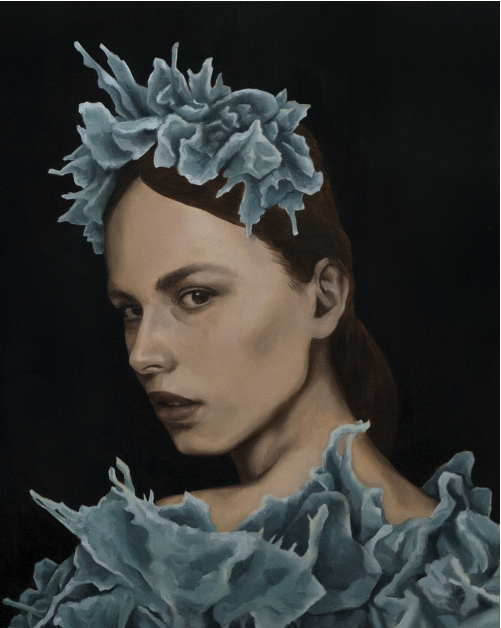Description
On the one hand, I’m proposing a work entitled “Nocturnes”: A third of our lives are spent at night. It influences a multitude of aspects of our daily lives. Some aspects are known to scientists, others are still unknown. The night, the world of sleep and dreams, a universe that has given rise to numerous myths throughout history, widely studied but never fully elucidated. For this project, the first images came to me just as I was falling asleep. The series is inspired by 16th-century Flemish and Italian paintings. Here, the finery is replaced by a polysomnography net, enabling an electroencephalogram of the brain during sleep. Human beings seek to understand, analyze and treat. In this still life, ancient natural remedies are combined with contemporary chemical treatments. These 3 30 x 40 cm oils on wood (Polysomnographie, Passiflore, Polygraphie) are framed in black American wooden boxes. They are part of a collection of 12 paintings. On the other hand, I propose two works entitled “Portraits dendritiques”: I used electron microscopy images to create futuristic draperies. The dendritic cell, an immune system cell, changes its appearance according to its activity. The game is to superimpose the microscopic on the macroscopic. The invisible and the visible. These portraits depict faces isolated by confinement. Each body is dressed and embellished by its immunity. These 2 oil paintings on canvas (Dendritic shoulder pad, Dendritic crown) measure 50 x 40 cm and are framed with a 70 x 50 cm passe partout. I can also offer other paintings, similar in size or larger.
Biography
Works
